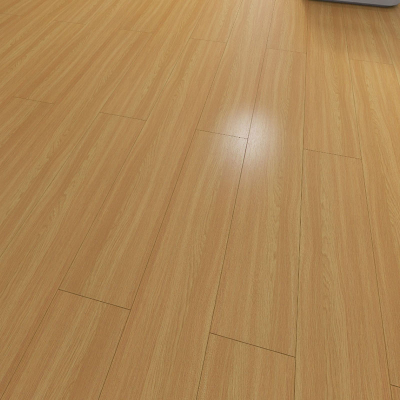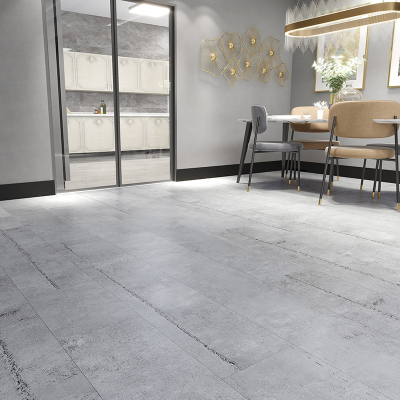Comprehensive Guide to Waterproof Laminate Flooring Options: Materials, Standards, and Installation Tips
Comprehensive Guide to Waterproof Laminate Flooring Options: Materials, Standards, and Installation Tips
Introduction
Waterproof laminate flooring has revolutionized the way homeowners and commercial spaces approach durable, aesthetic, and moisture-resistant flooring solutions. With advancements in materials science and engineering, waterproof laminate flooring offers a perfect blend of appearance, performance, and resilience in environments prone to moisture exposure. This article explores the top waterproof laminate flooring options, underlying materials, engineering principles, industry standards, installation best practices, and regulatory considerations.
1. Understanding Waterproof Laminate Flooring
Laminate flooring typically consists of multiple layers fused together: a wear layer, a decorative design layer, a core layer, and a backing layer. Traditional laminate flooring is susceptible to water damage; hence, waterproof variants incorporate advanced materials and manufacturing techniques to resist moisture infiltration.
Core Materials:
High-Density Fiberboard (HDF) with Waterproof Treatment: Enhanced with hydrophobic chemicals and wax treatments.
Stone Plastic Composite (SPC): A mineral-based core combining limestone powder and plastic for superior water resistance.
Wood Plastic Composite (WPC): Incorporates wood fibers with plastic polymers, offering waterproof and cushioning properties.
2. Common Waterproof Laminate Flooring Options
| Flooring Type | Core Material | Waterproof Features | Typical Thickness | Installation Type |
|---|---|---|---|---|
| Water-Resistant HDF | HDF + wax/chemical treatment | Resists minor spills; not fully waterproof | 7-12 mm | Click-lock or glue |
| SPC Laminate | Stone Plastic Composite | 100% waterproof; dimensionally stable | 4-8 mm | Click-lock or floating |
| WPC Laminate | Wood Plastic Composite | Waterproof with softer underfoot feel | 6-8 mm | Click-lock or floating |
3. Engineering Principles Behind Waterproof Laminate Flooring
Waterproof laminate flooring relies on:
Core Density & Composition: SPC’s mineral core has near-zero water absorption; WPC’s plastic matrix blocks moisture pathways.
Edge Sealing Technology: Micro-beveled edges, sealants, or locking mechanisms prevent water ingress at seams.
Wear Layer Coatings: Polyurethane or aluminum oxide layers resist scratches and stains while preventing water penetration.
Backing Layer: Waterproof backing reduces moisture transfer from subfloors.
4. Industry Standards and Regulatory Compliance
Waterproof laminate flooring must adhere to various standards:
ASTM F3261: Standard specification for SPC flooring.
EN 13329: Requirements for laminate floor coverings, including water resistance.
ISO 9001: Quality management system certifications for manufacturers.
FloorScore®: Certification for low VOC emissions, important for indoor air quality.
Fire Resistance: Classifications per ASTM E84 or EN 13501 depending on region.
5. Installation and Operational Considerations
Preparation:
Subfloor must be level, clean, and dry.
Use vapor barriers in moisture-prone areas (e.g., basements).
Installation:
Use manufacturer-recommended underlayment.
Employ click-lock systems or appropriate adhesives for edge sealing.
Maintain expansion gaps to prevent buckling due to thermal changes.
Maintenance:
Clean spills immediately to avoid standing water.
Use non-abrasive cleaners and microfiber mops.
Avoid wax or oil-based products which can degrade protective layers.
6. Examples of Application Scenarios
| Environment | Recommended Flooring Type | Key Benefits |
|---|---|---|
| Residential Kitchens | SPC or WPC laminate | Water resistance plus durability under high traffic |
| Commercial Lobbies | SPC laminate with thick wear layer | High wear resistance and 100% waterproof |
| Bathrooms | SPC laminate with sealed edges | Complete waterproofing with stylish finish |
7. Frequently Asked Questions (FAQs)
Q1: Can waterproof laminate flooring be installed in bathrooms?
A: Yes, SPC and WPC laminate flooring options are suitable for bathrooms due to their high water resistance and dimensional stability.
Q2: How thick should waterproof laminate flooring be?
A: Thickness typically ranges from 4mm to 12mm. Thicker flooring offers better durability and sound insulation but may cost more.
Q3: Is waterproof laminate flooring environmentally friendly?
A: Many manufacturers comply with environmental standards like FloorScore® and use recycled or low-emission materials.
Q4: How to handle minor scratches on waterproof laminate flooring?
A: Use manufacturer-recommended repair kits or professional refinishing methods to maintain surface integrity.
8. Conclusion and Professional Recommendation
Waterproof laminate flooring offers a practical and stylish flooring solution for a variety of settings requiring moisture resilience without compromising on design. Understanding the material composition, installation best practices, and compliance with industry standards is vital for ensuring long-term performance.
We recommend consulting with flooring specialists and thoroughly evaluating environmental conditions before selection and installation. Contact us for expert guidance to identify the best waterproof laminate flooring option tailored to your specific needs.





